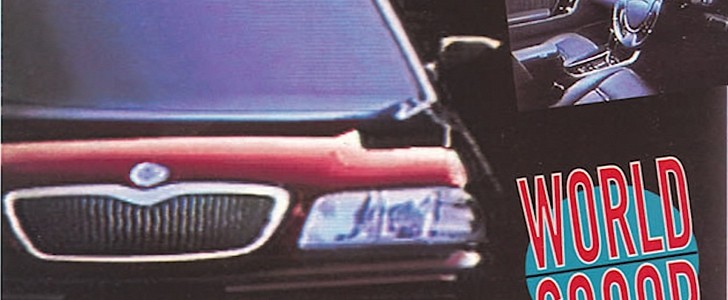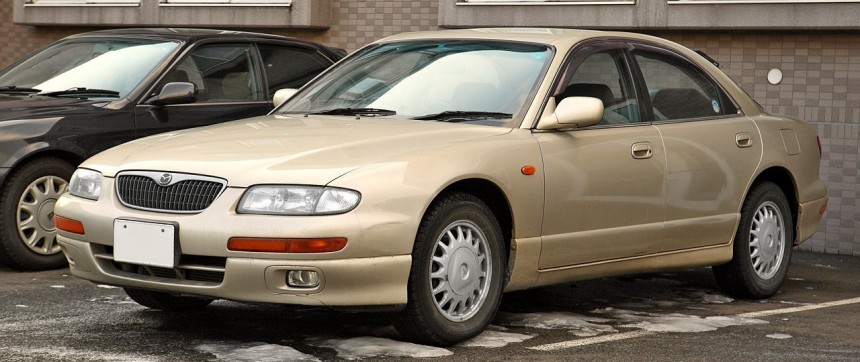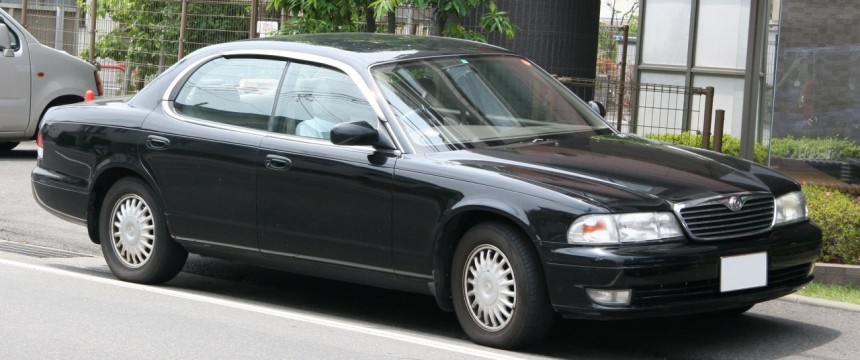Imagine developing a car so daring and so luxurious that it could take the automotive world by storm. Imagine putting all your assets, time, and best brains to catapult your success from a middle-level automaker to number one. But then, there’s an economic collapse that runs for not just one but two decades. The project dies, and an industry-changing V12 never gets to crank. That is the story of the almost famous Mazda Amati 1000 luxury car.
Nolan Sykes of Donut Media tells the story of Mazda’s groundbreaking luxury car that never really took off.
Japanese automakers are famous for many things. But at the top of their list are affordable, reliable, efficient automobiles. This combination ensures they are afloat, even when everyone else seems to be tumbling. But that doesn’t mean they haven’t invested in the other side of the automotive world.
Toyota is famous for Lexus, Nissan for the Infiniti, and Honda for Acura, but what about Mazda? Mazda is prevalent for the Miata, RX-7, and RX-8. But what most people don’t know is they had a luxury brand that unfortunately flopped. So, what happened to Mazda’s luxury brand?
Well, grab your history books, ladies and gentlemen, because it all started with an economic boom. The economic boom was the Japanese Asset Price Bubble, or Baburu Keiki. The Japanese Asset Price Bubble lasted from 1986 to 1991, leading to extreme levels of financial prosperity in all sectors of Japan, including real-estate and automotive.
The boom didn’t start by chance. In September 1985, the U.S, France, the United Kingdom, Japan, and Germany signed an agreement known as the Plaza Accord. The agreement depreciated the U.S. dollar against the Franc, Deutsche Mark, British Pound, and the Japanese Yen. The plan was to increase U.S exports and make purchasing foreign assets easier for Japan and agreement countries.
The agreement created a stronger Yen and an optimistic economy for Japan. As a result, businesses in Japan boomed, including the auto industry.
Before this took place, the U.S was experiencing its own hurdles. There was an oil embargo from Saudi Arabia in 1973, forcing gas prices to rise to 300%. With an oil crisis, Americans sought reliable, efficient automobiles, an adjustment the American automakers were not too concerned about - in came the Japanese automakers.
The takeover was so profound that Japanese car sales market-share in America rose from 6.5% to more than 20% in 1980. The Japanese auto industry was doing so well that the U.S. administration sought to slow down the import cap.
To keep exports at a minimum, Japanese automakers came to a solution. Armed with profits from the price asset bubble, they dove into the luxury car market.
In 1985, Honda launched Acura, and in 1986 came the Integra. Toyota developed and released the Lexus LS 400. What about Mazda?
With a lot of success from the Miata, Mazda felt they were ready to dive into the luxury car world. In 1991, they announced the development of the Amati. Their flagship sedan aimed to compete with the BMW 7 Series, the Mercedes S-Class, and Toyota’s Lexus LS 400. More importantly, the Amati 1000 luxury sedan would run on a V12 engine.
At this point, Mazda was in unchartered territory for coming up with this concept in the early 90s. It had set its eyes on becoming the third largest automobile manufacturer behind Toyota and Honda, and things were looking very promising.
But like all good things, Mazda was facing some hurdles. Mazda wasn’t as well funded as Toyota and Honda, totally frustrating their efforts in producing a luxury brand and a flagship sedan. The Japanese automaker was punching way above its weight class, and to add salt to injury, Japan’s economy started to take a nosedive, entering a period called the ‘Lost Decade.’
Unable to afford new projects, the Amati Project and its development died. According to Sykes, Mazda erased all the evidence of the Amati brand or the Amati 1000.
“It just goes to show that even if you take the time to make sure that the car was well designed, with a great engine, there are huge factors at play when it comes to launching a car brand, like politics and good market timing,” Sykes said. “We can only speculate what the company would look like today if they managed to see their luxury brand, Amati, actually take off,” he added.
Japanese automakers are famous for many things. But at the top of their list are affordable, reliable, efficient automobiles. This combination ensures they are afloat, even when everyone else seems to be tumbling. But that doesn’t mean they haven’t invested in the other side of the automotive world.
Toyota is famous for Lexus, Nissan for the Infiniti, and Honda for Acura, but what about Mazda? Mazda is prevalent for the Miata, RX-7, and RX-8. But what most people don’t know is they had a luxury brand that unfortunately flopped. So, what happened to Mazda’s luxury brand?
The boom didn’t start by chance. In September 1985, the U.S, France, the United Kingdom, Japan, and Germany signed an agreement known as the Plaza Accord. The agreement depreciated the U.S. dollar against the Franc, Deutsche Mark, British Pound, and the Japanese Yen. The plan was to increase U.S exports and make purchasing foreign assets easier for Japan and agreement countries.
The agreement created a stronger Yen and an optimistic economy for Japan. As a result, businesses in Japan boomed, including the auto industry.
Before this took place, the U.S was experiencing its own hurdles. There was an oil embargo from Saudi Arabia in 1973, forcing gas prices to rise to 300%. With an oil crisis, Americans sought reliable, efficient automobiles, an adjustment the American automakers were not too concerned about - in came the Japanese automakers.
The takeover was so profound that Japanese car sales market-share in America rose from 6.5% to more than 20% in 1980. The Japanese auto industry was doing so well that the U.S. administration sought to slow down the import cap.
To keep exports at a minimum, Japanese automakers came to a solution. Armed with profits from the price asset bubble, they dove into the luxury car market.
In 1985, Honda launched Acura, and in 1986 came the Integra. Toyota developed and released the Lexus LS 400. What about Mazda?
At this point, Mazda was in unchartered territory for coming up with this concept in the early 90s. It had set its eyes on becoming the third largest automobile manufacturer behind Toyota and Honda, and things were looking very promising.
But like all good things, Mazda was facing some hurdles. Mazda wasn’t as well funded as Toyota and Honda, totally frustrating their efforts in producing a luxury brand and a flagship sedan. The Japanese automaker was punching way above its weight class, and to add salt to injury, Japan’s economy started to take a nosedive, entering a period called the ‘Lost Decade.’
Unable to afford new projects, the Amati Project and its development died. According to Sykes, Mazda erased all the evidence of the Amati brand or the Amati 1000.
“It just goes to show that even if you take the time to make sure that the car was well designed, with a great engine, there are huge factors at play when it comes to launching a car brand, like politics and good market timing,” Sykes said. “We can only speculate what the company would look like today if they managed to see their luxury brand, Amati, actually take off,” he added.













